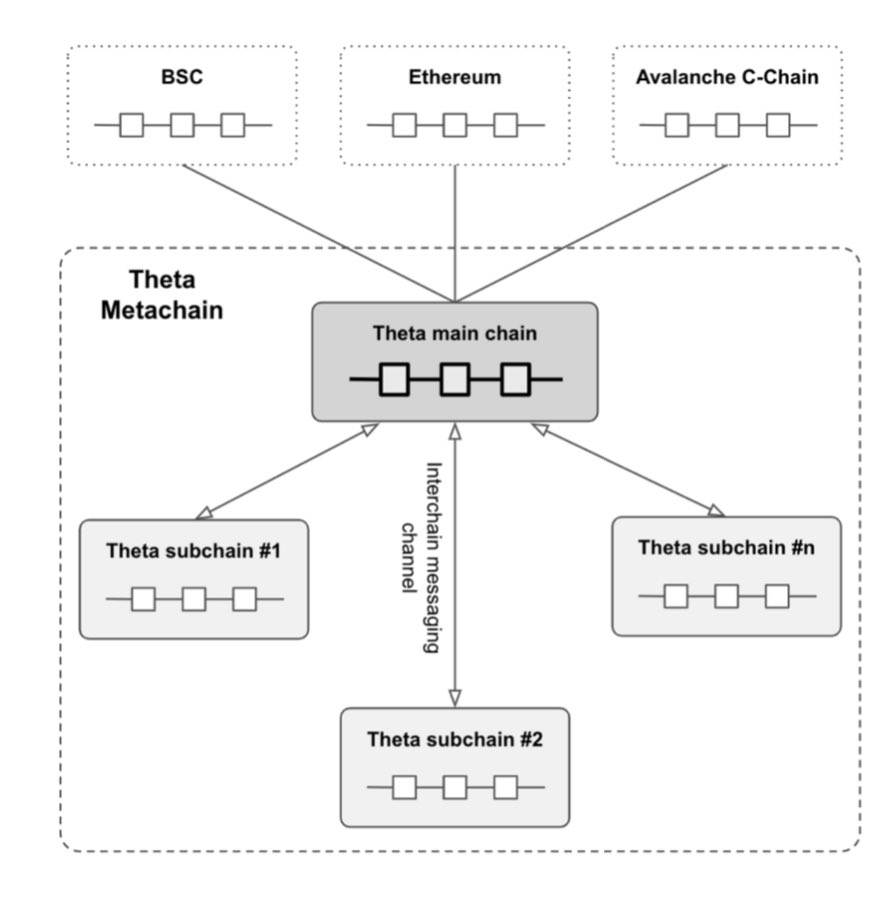
1/ In this thread I will give a summary of $Theta Mainnet 4.0.
Theta dev team detected Web3 related problems, and try to address it with this update. I think the mainnet Can split in two parts:
1) Theta Metachain
2) Theta complete edge network (cache, compute, storage, etc)
Theta dev team detected Web3 related problems, and try to address it with this update. I think the mainnet Can split in two parts:
1) Theta Metachain
2) Theta complete edge network (cache, compute, storage, etc)
https://twitter.com/sfsportsghost/status/1512561491374866435
2/ The high level diagram of Mainnet 4.0 can be seen here
From the “server” side, we have the existing Theta mainnet and the subchains. (rollup)
In the intermediate side, we have a huge pack Theta edge network consisting in process/store full/part of the information there.
From the “server” side, we have the existing Theta mainnet and the subchains. (rollup)
In the intermediate side, we have a huge pack Theta edge network consisting in process/store full/part of the information there.

3/ This is the a good representation of the Edge Computing paradigm, where part of the info are attended by intermediate Fog/edge nodes. In this way, the network latency could reduce drastically compared with the traditional Cloud Computing paradigm.
4/ From the client side, it is really transparent because we can access all the Edge network functions (cache, compute, store, VOD encoding, etc) with the Theta Video API.
5/ Regarding the Metachain, it consists in the theta Mainnet, the subchains and the Inter chain messaging channel.
Private enterprises can run their own subchains and an easy Theta SDK is provided for this.
Private enterprises can run their own subchains and an easy Theta SDK is provided for this.

6/ The Mainnet is there to maintain the security of the ecosystem.
Meanwhile, the subchains can process transactions independently, and make micropayments without the need to commit the transactions to the Main chain.
Meanwhile, the subchains can process transactions independently, and make micropayments without the need to commit the transactions to the Main chain.
7/ The Inter chain communication is reached using TNT-20 smart contract.
Here is why wrapped Theta takes a important role, enabling us to send the original Theta governance token (and all TNT-20/721 tokens) via this communication channel.
Here is why wrapped Theta takes a important role, enabling us to send the original Theta governance token (and all TNT-20/721 tokens) via this communication channel.

8/ In order to crate a subchain, Theta as collateral must be deposited. The quantity is not determined yet in the white paper.
It will improve the demand of theta tokens since it is required to create a subchain.
Some comparisons are made to compared with Cosmos #ATOM (image)
It will improve the demand of theta tokens since it is required to create a subchain.
Some comparisons are made to compared with Cosmos #ATOM (image)

9/ The metachain 4.0 also includes an ZK rollup extension, in order to improve the data availability and security. For more info:
coinmarketcap.com/alexandria/art…
coinmarketcap.com/alexandria/art…
10/ A comparison with other chains is shown here. It can be seen here that in terms of transaction speed, it could be faster than #ATOM, #DOT, and #AVAX. 

11/ An important feature is that the architecture enables a hybrid solution that combines cloud-based infrastructures and the power of decentralized edge node network.
It means that it can co-exists with well known cloud solutions like #Amazon AWS and #Microsoft Azure.
It means that it can co-exists with well known cloud solutions like #Amazon AWS and #Microsoft Azure.
• • •
Missing some Tweet in this thread? You can try to
force a refresh



